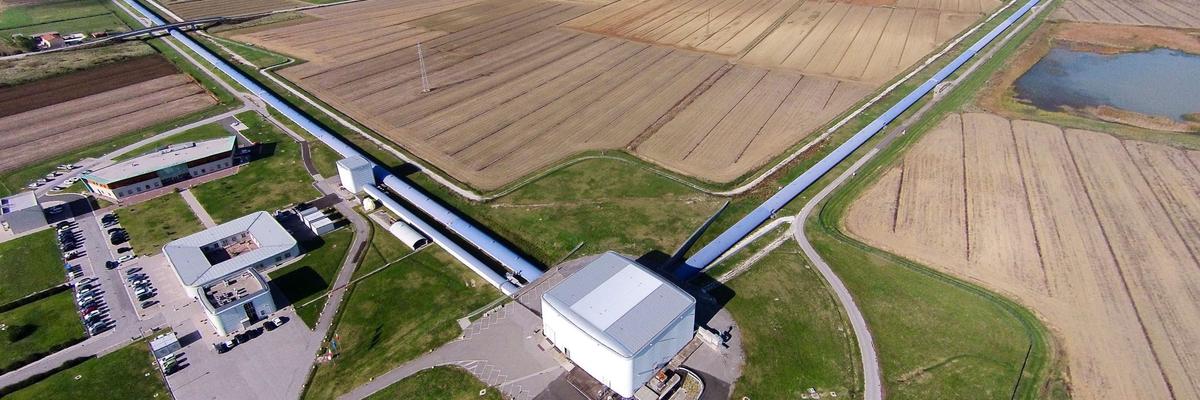Highlight
IFAE joins the VIRGO collaboration
November 14, 2018

The detection of Gravitational Waves (GWs) from a black hole (BH) binary merger by LIGO in 2015 is a milestone that represents the beginning of a new era in the exploration of the universe. Shortly after the addition of the VIRGO antenna into the network lead to the detection of the neutron star (NS) binary merger that could be followed in electromagnetic signals, and thus represents the beginning of multi-messenger astronomy. These events have radically changed the stage for several areas of physics, from astrophysics to particle physics.
IFAE just became a new member institution inside the VIRGO collaboration. This opens a new long-term research line in IFAE related to GWs detection using terrestrial interferometry. A group of researches from IFAE has taken significant responsibilities in the VIRGO experiment related to the control of the stray light inside the experiment, which is considered a limiting factor for its sensitivity. The group plans for playing an important role in the ongoing commissioning, operations and upgrade of the interferometer. For the latter, IFAE proposed the construction of new baffles instrumented with photo sensors around the test masses in the suspended areas.
The implementation of active baffles with photo sensors, determining online the distribution of light close to the mirrors would allow for: a much more efficient alignment and fine-tune of the parameters of the interferometer during the commissioning phase after each shutdown period; feeding back the observed light distributions into the simulations and the description of the mirror surface; and the suppression of developing high modes in the interferometer, beyond its fundamental mode, leading to recognizable patterns in the light distribution in the baffles.
In the physics analysis front, the IFAE team is developing a complete research program using LIGO/VIRGO data, which includes topics related to:
- BH-BH and NS-NS coalescence and their mass/spin spectrum determination.
- Search for primordial BHs as candidates for dark matter.
- Searches for axion-like signals in GWs.
- Test of exotic models for Gravity beyond General Relativity.
- Determination of the universe expansion rate using GWs.
- GWs as probes for inflation and phase transitions in the early universe.
Both LIGO and VIRGO are planning for new observation periods in 2019, 2021 and 2024, with gradually increasing sensitivities, thus promising to bring new breakthroughs in the understanding of the universe. IFAE will be in a privileged position to analyze the LIGO/VIRGO data and, in collaboration with IFAE’s teams in CTA/MAGIC and Observational Cosmology, to fully profit from a multi-messenger approach.
- IFAE Research group
- Gravitational Waves Group
- Contact
